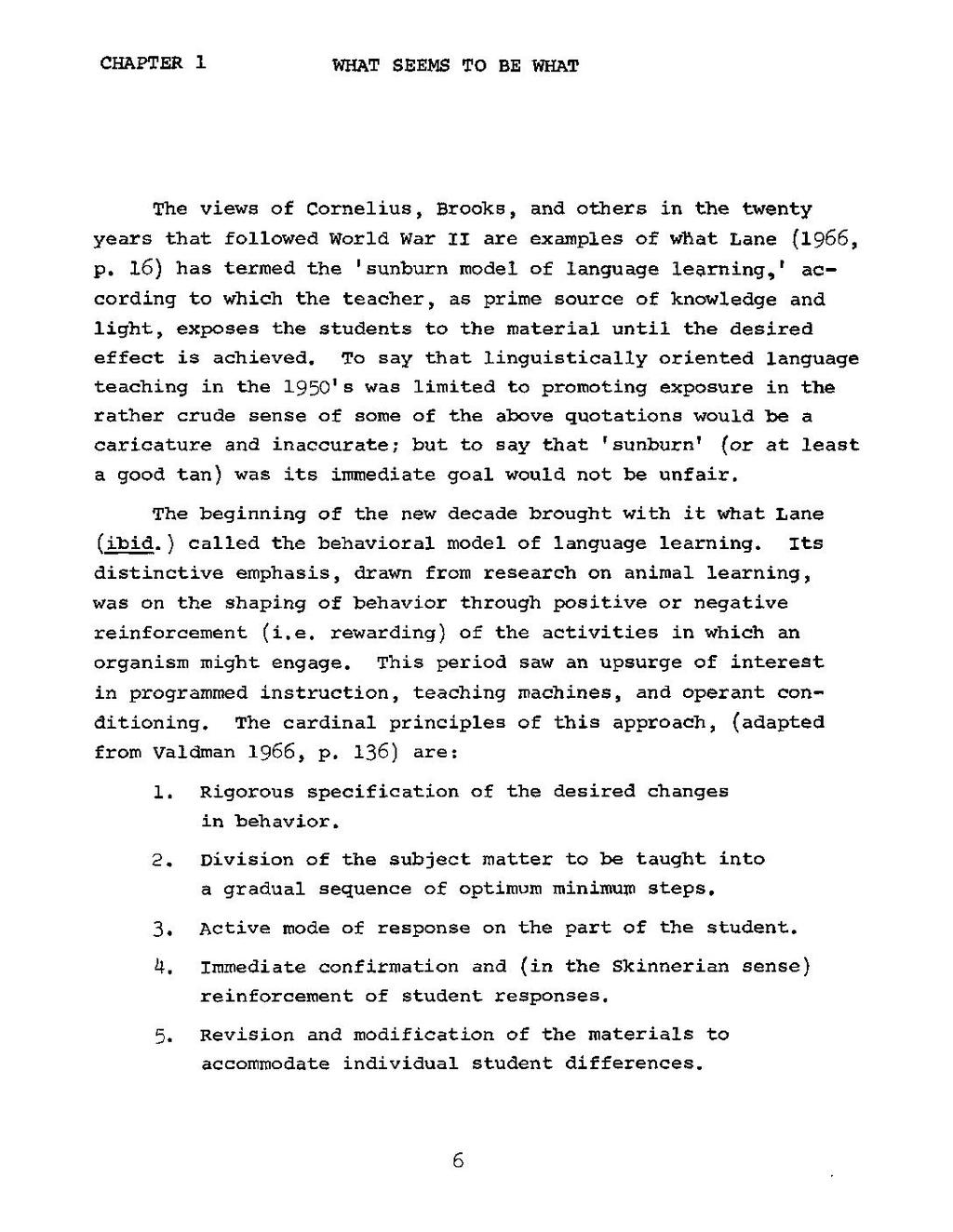The views of Cornelius, Brooks, and others in the twenty years that followed World War II are examples of what Lane (1966, p. 16) has termed the 'sunburn model of language learning,' according to which the teacher, as prime source of knowledge and light, exposes the students to the material until the desired effect is achieved. To say that linguistically oriented language teaching in the 1950's was limited to promoting exposure in the rather crude sense of some of the above quotations would be a caricature and inaccurate; but to say that 'sunburn' (or at least a good tan) was its immediate goal would not be unfair.
The beginning of the new decade brought with it what Lane (ibid.) called the behavioral model of language learning. Its distinctive emphasis, drawn from research on animal learning, was on the shaping of behavior through positive or negative reinforcement (i.e. rewarding) of the activities in which an organism might engage. This period saw an upsurge of interest in programmed instruction, teaching machines, and operant conditioning. The cardinal principles of this approach (adapted from Valdman 1966, p. 136) are:
6
